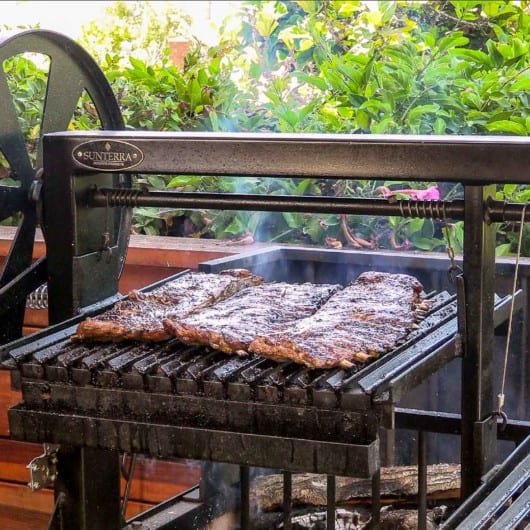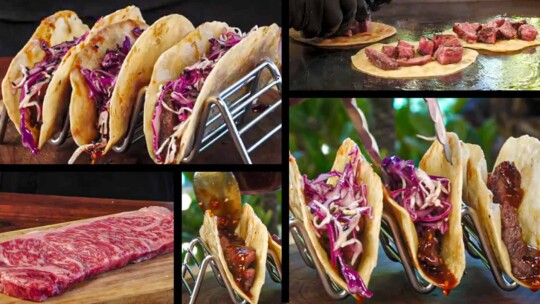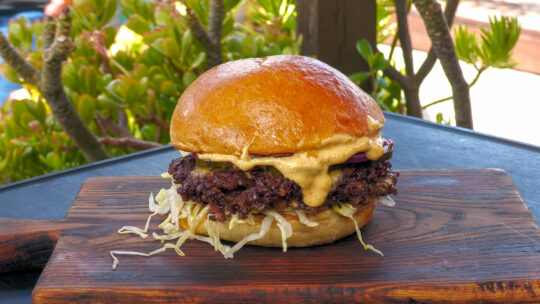Ribs are a backyard-BBQ staple meal. Which is why Ballistic BBQ host Greg Mrvich is excited to share his Brazilian pork rib cook—complete with marinade and glaze recipes—in this Backyard Life video.
Prepping the Pork Ribs
Greg kicks the cook-off by creating a marinade that he blends in a food processor.
With his marinade complete, Greg then preps his ribs by removing the outer membrane. When asked why he does this, Greg notes that t allows smoke penetration through both sides of the rib. (If you leave the membrane on, it prevents this from occurring.) He likes the mouthfeel of ribs without a “plasticky” crunch. (That said, Greg says to “do what you like to do.”)
How to Remove the Membrane From Pork Ribs
Greg says removing the membrane (and trimming the excess) is an easy process accomplished with only a butter knife. All you need to do, he says, is slide the butter knife under the top membrane. Then, twist to loosen it up so you can get a finger underneath, and pull it off. Preferably, take ONLY the top membrane off. The bottom’s made of open fibers which help keep the ribs together, so you don’t want to risk removing it.
If there’s a bone on the end of the rack that’s been saw cut, you’ll want to cut that rib off so you’re left with a nice, clean-cut. Then, trim excess loose ends of membrane or fat to square off the ends of ribs.
Once the ribs are prepped, he places them in 2-gallon Ziploc bags filled with marinade for a minimum of 2 hours. This takes up less fridge space and easier to massage the ribs in. (Greg prefers to marinade his ribs overnight.)
Although ribs can be cooked on a variety of grills (kettle cooker, or pellet, gas or charcoal grill), Greg is opting for an Argentine grill. Namely, because it burns logs and has adjustable racks. He notes that you’ll want to generate coals, while also being mindful of your temperatures. On a kettle cooker, for example, Greg would do indirect heat with the lid on at about 250 degrees Fahrenheit, then finish them over direct heat.
Regardless of the type of grill you use, Greg says you’ll want to rotate the ribs so they’re evenly cooked. “Cook in the mid-200-degree range for about an hour (flipping often and spritzing with water) to achieve a nice, even cook,” he reiterates.
Assembling Glaze and Finishing the Cook
Next, Greg will mix his glaze (his recipe is below), then microwave it for 30 seconds before applying. While the ribs can be cooked to your particular temperature/consistency liking, Greg prefers to grill his for approximately 5 hours (or, until the bones begin falling apart). Going the “low-and-slow” route helps create optimal flavor and tenderness.
Greg notes that your ribs can be cooked to your particular temperature/consistency liking, but that he prefers to grill his for almost 5 hours (or, until bones begin to fall apart). He always goes the “low-and-slow” route to achieve maximum flavor and tenderness!
And, there you have it! All you need to do now is break out the wet wipes!




